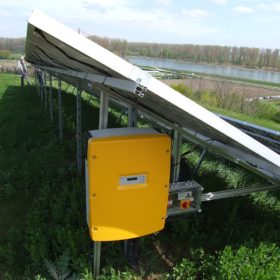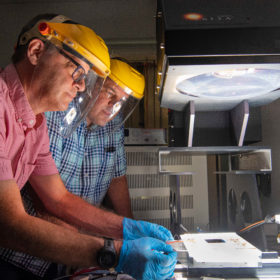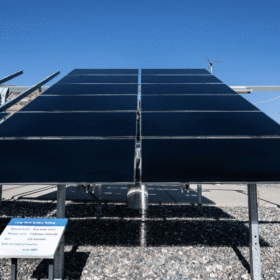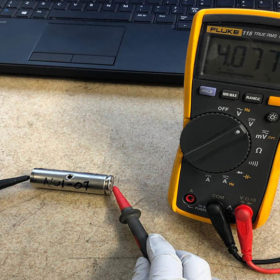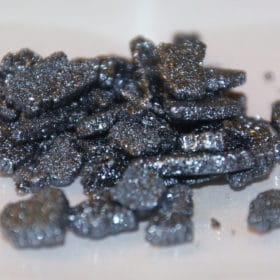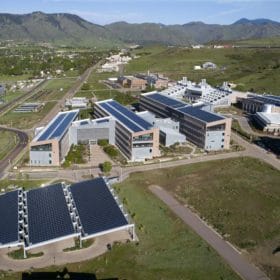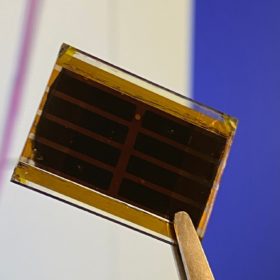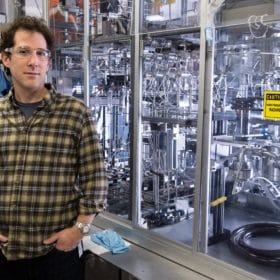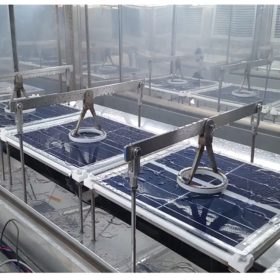Interoperable SCADA protocols for PV inverters
NREL researchers have developed interoperable SCADA protocols for PV inverters. Two new sets of codes were conceived to enable legacy inverters, which are inverters that are not capable of providing some or all of the grid support functions to participate in advanced distribution management.
Perovskites get a $14m boost
The United States Department of Energy is providing $14 million for a research center for perovskite solar technology. Led by Sandia National Laboratories, the center’s work will focus on establishing standard testing protocols as well as ensuring the long-term reliability of perovskite cells and the bankability of companies setting up to produce them.
Software to speed up permitting proceedings for rooftop PV
The National Renewable Energy Laboratory and UL have joined forces to develop Solar Automated Permit Processing Plus software. NREL has committed to adding new features to SolarAPP+ until March 2023.
Polymer current collectors could prevent battery fires
A team of NREL researchers has proposed a new approach to fix lithium-ion batteries’ fire problem. The answer may lie in temperature-sensitive current collectors.
Inverted blade-coated perovskite cell with 23.2% efficiency
A US research team has improved the efficiency of a blade-coated perovskite cell with a p-i-n structure by reducing iodine-induced charge traps in the films. They used the cells to fabricate a mini module with an efficiency of 18.2%.
Raising the temperature on module standards
Scientists in the U.S. laid out the rationale behind new PV module testing specifications published last year, which aim to better take into account the role of temperature in various types of performance loss. They suggest a new ‘98th percentile’ approach to measuring module operating temperatures, which would offer system designers a better understanding of the module’s performance in a particular ‘micro-environment’.
Perovskite solar cell with 21% efficiency includes tech to prevent lead leaks
U.K. scientists have used mesoporous scaffolds based on hydroxyapatite nanoparticles – blended with titanium oxide nanoparticles – to create a mechanism that prevents lead leakage in perovskite solar cells. They claim the method captures lead ions in leaks, while also increasing cell efficiency.
New approach to III-V tandems sets 32.9% efficiency record
A collaboration between the U.S. National Renewable Energy Laboratory and Australia’s University of New South Wales has yielded a new efficiency record of 32.9% for a tandem cell device utilizing III-V materials. Key to the achievement was a new technique enabling the researchers to take advantage of “quantum wells” in the material that serve to trap charges and enable tuning of the cell bandgap to absorb more of the light spectrum.
Perovskite-based solar window tech from NREL
NREL’s new solar window darkens in the heat of the sun, producing electricity via embedded perovskite film. The tech is based on formamidinium-based metal halide perovskite, an inherently thermochromic material exhibiting significant optical changes.
A stress test for all seasons
Scientists led by the U.S. National Renewable Energy Laboratory (NREL) have developed a new stress testing protocol for PV modules, one designed to simultaneously expose modules to multiple stresses, as they likely would be in the field. Putting modules through this test, the researchers have already been able to reveal new information regarding backsheet degradation, and they promise new insights into other degradation mechanisms both known and unknown as well.
